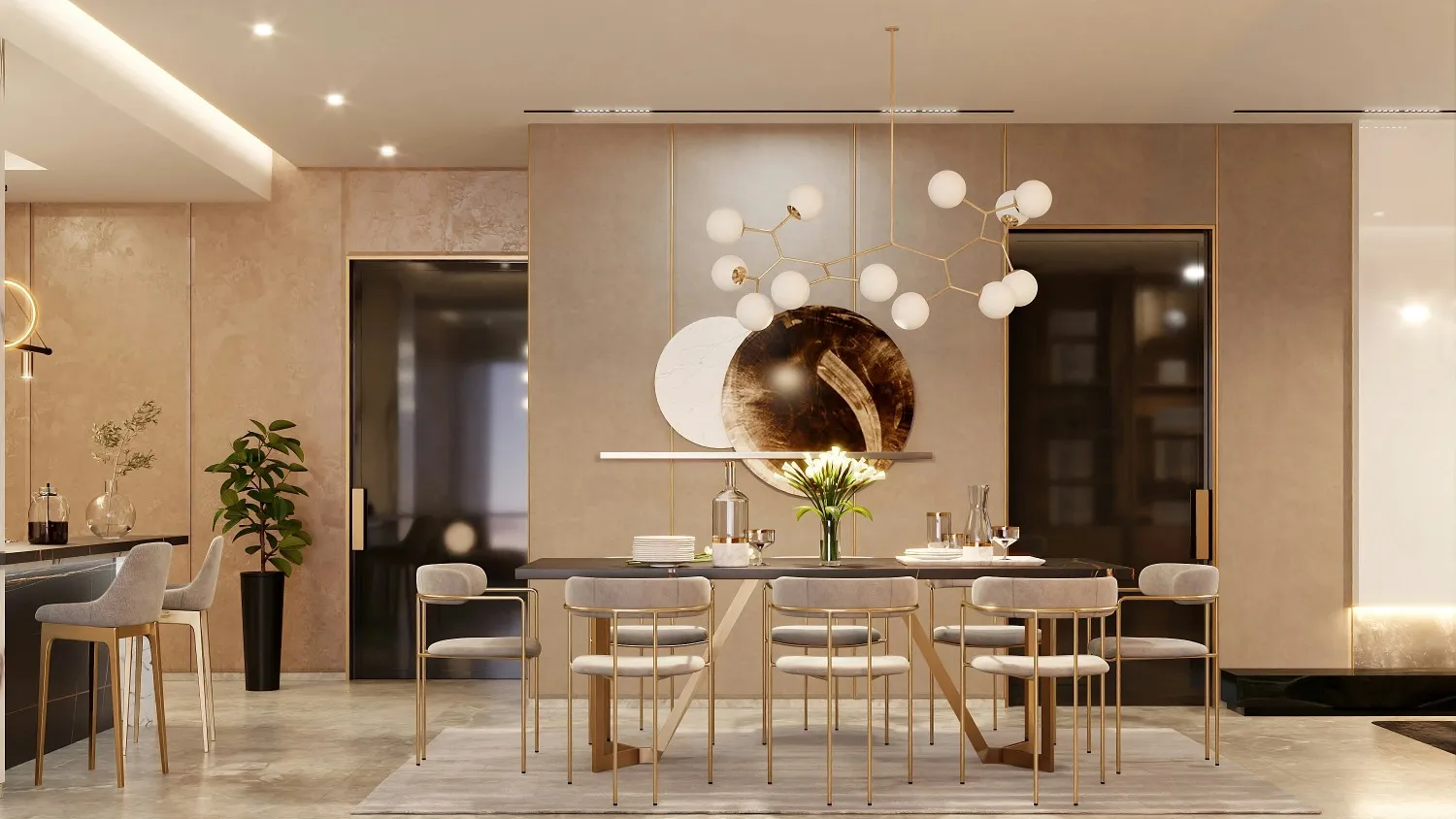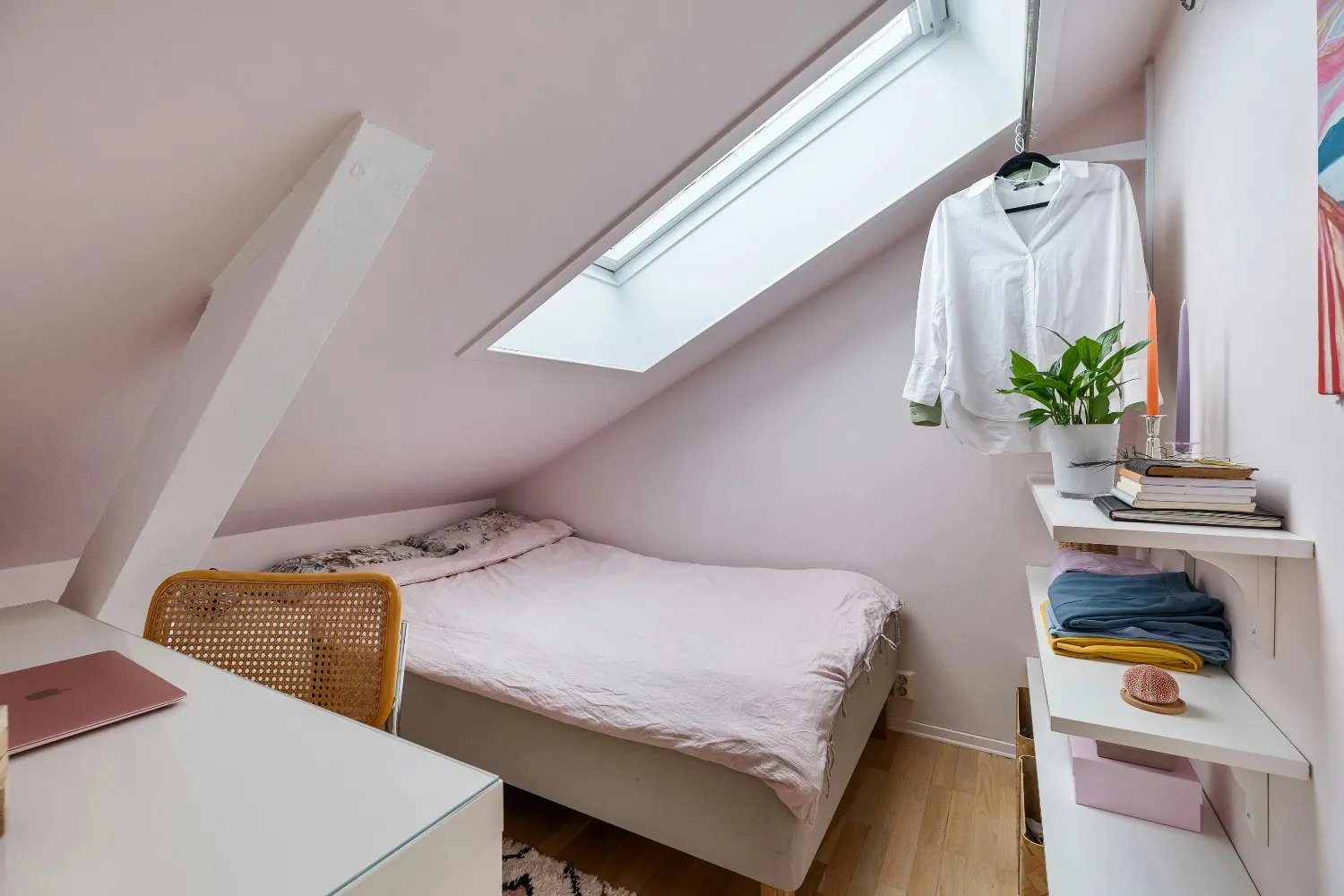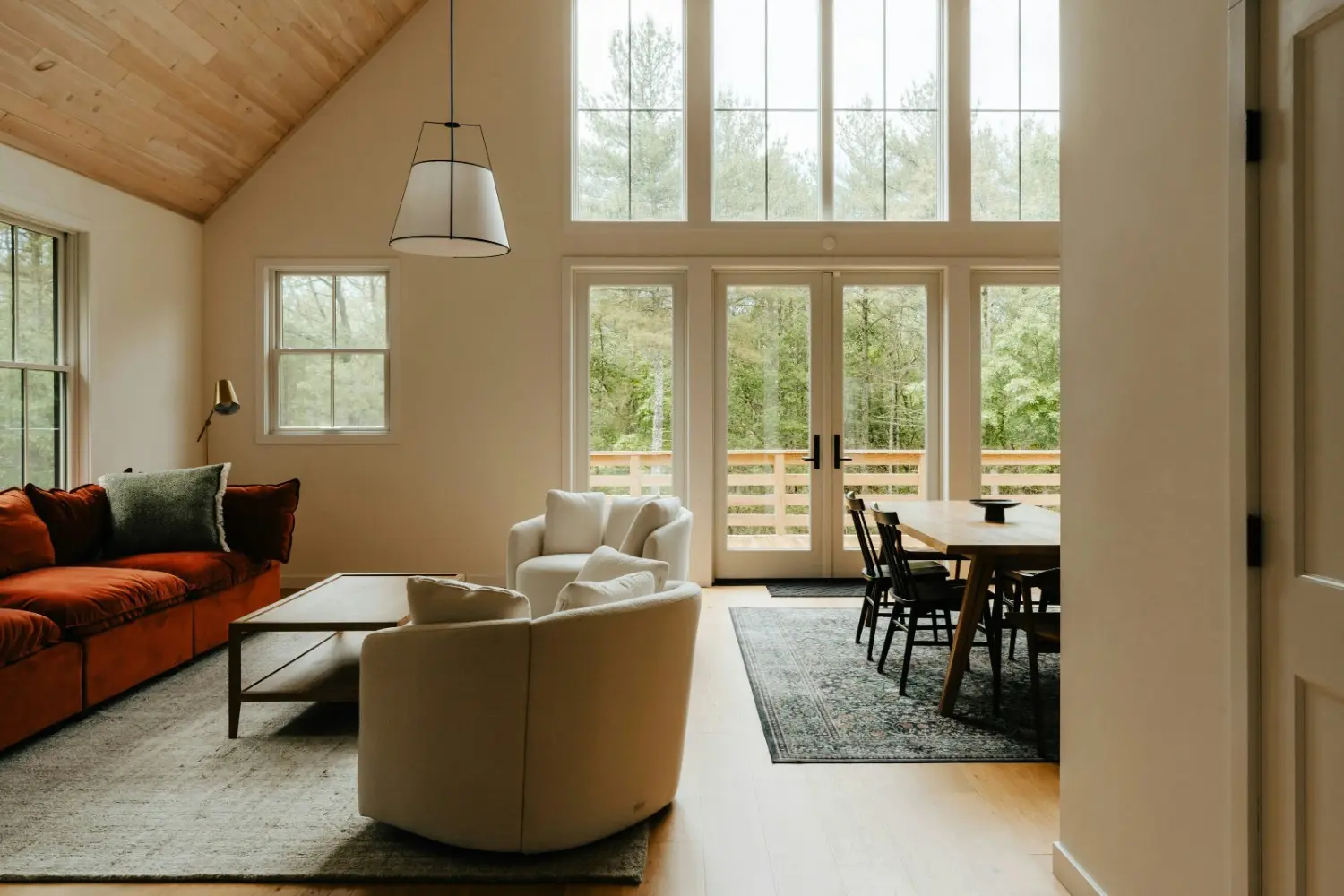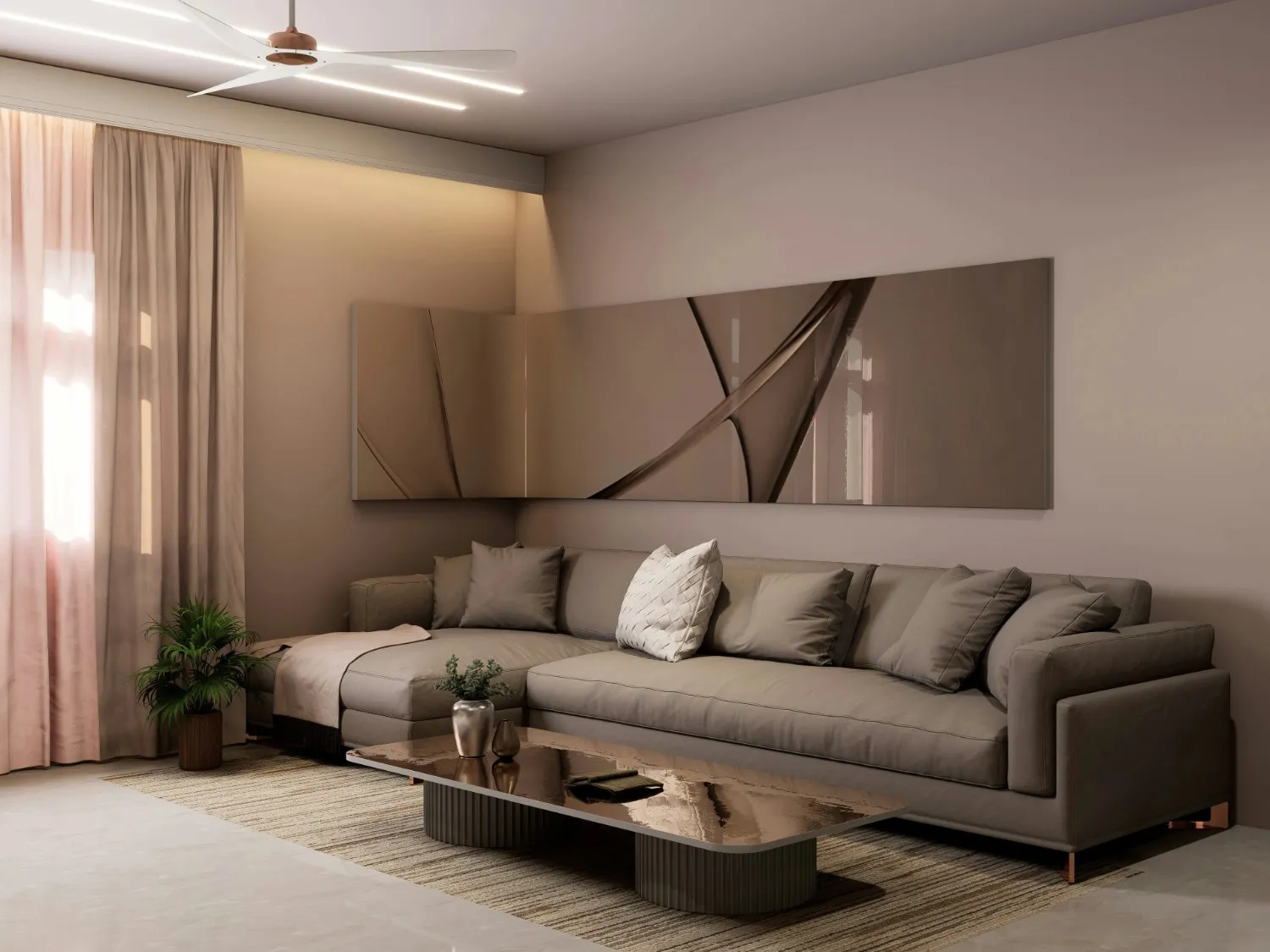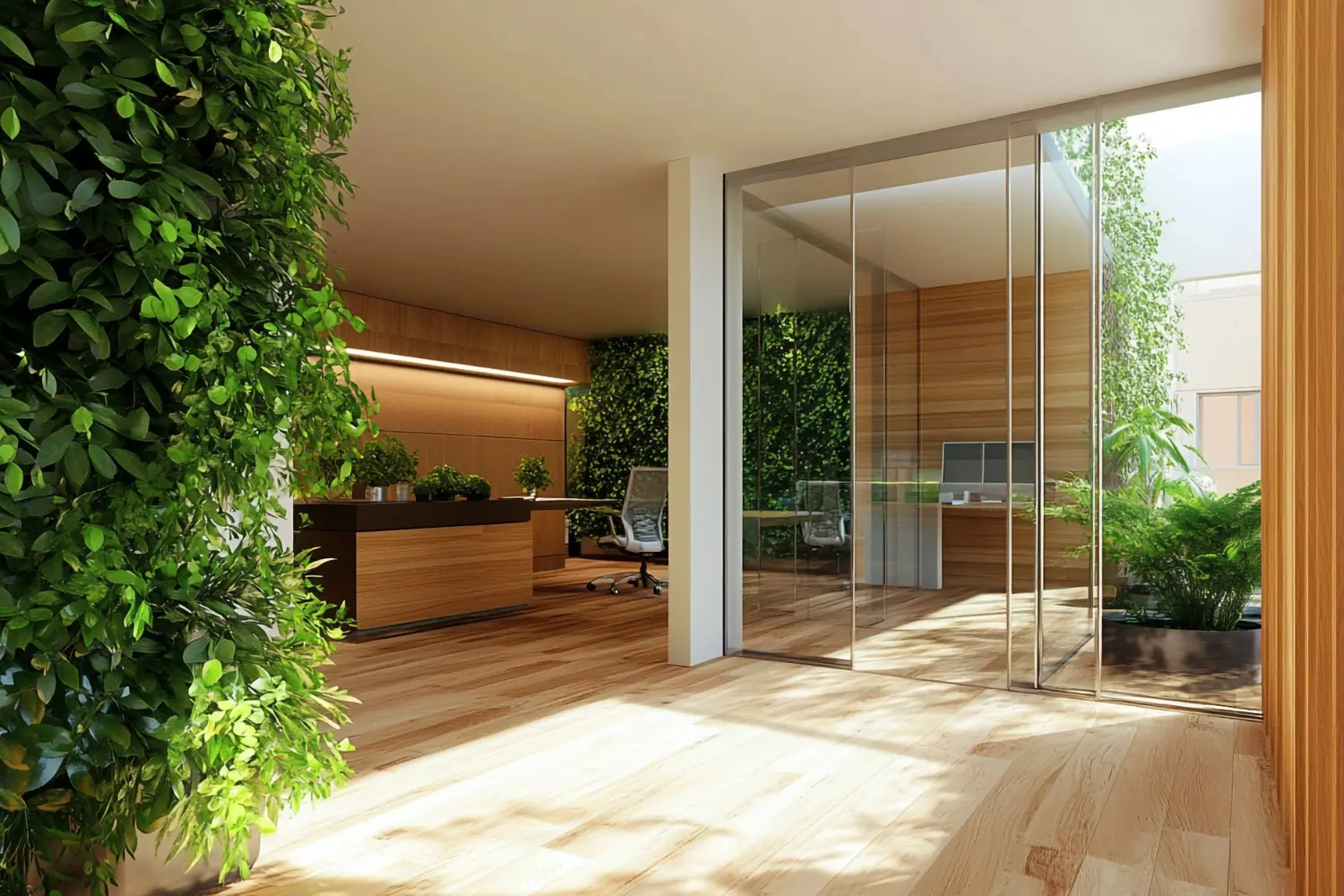Human centered interior design is no longer a niche concept used only by specialized studios. It has become the foundation of how architects, designers, and builders shape spaces for real people. As cities grow denser, lifestyles shift, and work-life boundaries blur, the need for interiors that support comfort, performance, and emotional well-being becomes more urgent.
At Ark & Mason, we see human centered interior design as more than a methodology. It’s a responsibility. Every decision, from zoning and lighting to materials and acoustics, shapes how people feel, behave, and interact. This guide explores why human-centered principles matter, how they translate into real spaces, and what best practices forward-thinking designers use to create environments that truly serve people.
Highlights
- Human centered interior design improves comfort, emotional well-being, and day-to-day performance.
- It blends psychology, ergonomics, sustainability, and inclusivity into every design decision.
- Ark & Mason uses human-focused frameworks across residential, commercial, and public projects to create spaces that feel intuitive, adaptable, and experiential.
What Is Human Centered Interior Design?
Human centered interior design is a design philosophy that places people, their needs, emotions, behaviors, and lived experiences, at the core of every decision. Instead of beginning with aesthetics, furniture choices, or surface-level trends, it starts with understanding how individuals will actually use a space and why certain design decisions matter. It asks deeper questions that shape both function and feeling:
- How will people move through the space throughout the day?
- What activities need to happen here, and what barriers currently exist?
- What emotions should this environment support, calm, focus, belonging, creativity?
- How can the space remain accessible, adaptable, and comfortable for users with diverse needs?
Human centered interior design blends rigor and empathy, merging research-backed insights with thoughtful creativity. It draws from several disciplines to create environments that perform in real life, including:
- Environmental psychology to understand how surroundings influence stress, productivity, and mood
- Ergonomics and accessibility to support different body types, mobility levels, and sensory preferences
- Cultural and social context to ensure the space reflects user identity, rituals, and community values
- Emotional comfort and sensory design to shape lighting, acoustics, materials, and spatial rhythm
- Sustainability and health standards to protect well-being through air quality, material safety, and energy efficiency
At its core, human centered interior design acknowledges that interiors are not static backgrounds, they are active participants in our daily routines. A well-designed environment can influence how we interact with others, how we perform at work, how quickly we relax after a long day, and how safe or supported we feel in shared spaces.
By focusing on intuitive flow, sensory balance, and user-driven problem-solving, human centered interior design creates interiors that adapt to real people. The outcome is a space that feels:
- Intuitive: users instantly understand how to move, work, or relax within it
- Supportive: lighting, comfort, acoustics, and layout reduce stress rather than create it
- Connected: people feel grounded, welcomed, and emotionally engaged
- Productive: the environment enhances focus, collaboration, or rest, depending on its purpose
Ultimately, Human centered interior design aims to shape environments that make people healthier, happier, and more capable, not just spaces that look good, but spaces that feel genuinely good to live and work in.
Watch more: 10 Best Spa Room Decor Ideas for a Relaxing Space
Why Human Centered Interior Design Matters Today
1. Modern spaces must perform on multiple levels
Today’s interiors carry more responsibility than ever before. A single home may function as a living space, office, classroom, gym, and social lounge, often all in the same day. Workplaces must balance collaboration with deep-focus zones, and hospitality spaces need to deliver memorable, emotionally resonant experiences that compete with digital-first alternatives like online retail or food delivery apps.
Human centered interior design responds to these pressures by ensuring every square foot works harder. Instead of designing for aesthetics alone, it designs for lived reality: how people move, multitask, transition between roles, and restore themselves after long days. The result is an environment that adapts gracefully to changing needs without compromising comfort or flow.
2. Well-being is now measurable and non-negotiable
Scientific research has made one thing clear: interior environments directly influence human health and cognitive function. Studies across environmental psychology, ergonomics, and neuroscience show strong links between spatial design choices and:
- Cognitive clarity and task performance
- Stress and anxiety levels
- Emotional regulation
- Physical comfort and posture
- Sleep, circadian rhythm, and energy levels
Elements like lighting temperature, acoustic control, material toxicity, air quality, and spatial layout can either support or undermine daily well-being. Human centered interior design uses evidence-based strategies, not guesswork, to optimize these variables. Decisions are made with intention and measurable impact, creating spaces that actively support healthier, calmer, more productive lives.
3. Inclusive, diverse user needs must shape modern interiors
No two users experience a space the same way. Age, mobility, sensory sensitivity, neurodiversity, language barriers, cultural expectations, and personal comfort all influence how someone feels when they enter an environment.
Human centered interior design embraces this diversity by asking: Who is this space truly for, and how can it serve them better?
This approach leads to environments that feel welcoming and intuitive for everyone, such as:
- Adjustable lighting and ergonomic workstations
- Clear wayfinding for multilingual or visually impaired users
- Reduced sensory overload for neurodiverse individuals
- Layouts that accommodate mobility devices without sacrificing flow
- Cultural cues that reflect community identity
Inclusivity becomes an integral design layer, not an afterthought.
4. Technology is reshaping how people live, work, and connect
From hybrid work to smart home ecosystems, digital tools are embedded in everyday life. Interiors must now support seamless transitions between analog and digital worlds. That means:
- Workspace layouts that minimize screen glare and enhance virtual call quality
- Integrated charging stations and hidden cable management
- Lighting systems that shift throughout the day to match tasks and circadian rhythms
- Smart thermostats, occupancy sensors, and digital access systems
- Hospitality and retail environments that blend physical experience with digital engagement
Human centered interior design ensures technology enhances human comfort rather than complicating it. It creates spaces where digital systems feel intuitive, unobtrusive, and aligned with real human behavior, a principle especially valuable in condo interior design, where smart features must integrate seamlessly into compact, highly lived-in environments.
Core Principles of Human Centered Interior Design
Human centered design is rooted in five overarching principles. These principles guide every project at Ark & Mason.
1. Empathy + User Understanding
Design begins with listening. Understanding people’s routines, frustrations, motivations, and preferences is the foundation of intuitive space planning.
This involves:
- Observing behavior
- Conducting interviews
- Identifying pain points
- Mapping user journeys
- Reviewing accessibility needs
A space designed through empathy feels natural to navigate, people instantly understand where things are and how to use them.
2. Inclusivity and User Diversity
A single space often serves multiple users with different needs.
Human centered design accounts for differences in:
- Age
- Mobility and physical ability
- Ergonomic needs
- Sensory preferences
- Cultural context
- Language and communication styles
- Comfort thresholds
Thoughtful features like wider clearances, adaptable furniture, intuitive signage, and non-glare lighting allow more people to feel welcome and empowered.
3. Comfort and Well-Being
This principle focuses on how interiors support physical, emotional, and mental health.
Key elements include:
- Air quality
- Temperature comfort
- Adjustable, layered lighting
- Acoustics that protect privacy
- Natural elements and biophilia
- Soft textures and ergonomic furniture
- Cleanable, non-toxic materials
Spaces rooted in comfort reduce fatigue and stress, helping occupants feel grounded.
4. Flexibility + Future Adaptability
Human needs evolve. Strong interiors adapt.
Designing for flexibility may include:
- Modular furniture
- Multi-purpose rooms
- Movable partitions
- Open shelving systems
- Reconfigurable lighting
- Plug-and-play technology
Flexible interiors extend their lifespan and reduce the environmental and financial cost of future changes.
5. Emotional Resonance + Sense of Belonging
Humans connect to environments emotionally. Human centered design uses:
- Color psychology
- Material mood mapping
- Lighting temperature
- Artwork and storytelling
- Cultural references
- Biophilic cues
The result is a space that people remember, one that encourages pride, calm, or inspiration depending on the intent.
How to Apply Human Centered Design in Real Projects
Now let’s break down how human centered interior design translates into practical decision-making across homes, offices, retail, and public environments.
Create Intuitive Navigation and Layout
Intuitive spaces reduce stress, improve accessibility, and support smoother daily movement.
Human centered techniques include:
- Clear circulation paths: Eliminate bottlenecks and awkward transitions. Ensure wayfinding feels natural without heavy signage.
- Functional zoning: Group activities logically (e.g., quiet zones near natural light, active zones near entry points).
- Sightline planning: Use visual cues, lighting, furniture orientation, architectural framing, to subtly guide movement.
- Minimized cognitive load: Spaces should “explain themselves,” reducing decision fatigue.
When layouts support intuitive flow, people feel calmer and more confident navigating the space.
Incorporate Biophilic Design for Better Well-Being
Humans instinctively connect to nature. Biophilic design brings that connection indoors to reduce stress and boost performance.
Elements of biophilic human centered design:
- Access to daylight
- Indoor plants and green walls
- Natural materials like wood, clay, and stone
- Organic shapes and patterns
- Water features
- Outdoor views or simulated nature
Studies show biophilic interiors can:
- Improve focus and memory
- Reduce anxiety
- Increase workplace productivity
- Enhance hospitality experiences
Ark & Mason frequently applies biophilic strategies in wellness, education, hospitality, and residential interior design projects.
Prioritize User Control and Personalization
A hallmark of human centered interiors is giving occupants more control over their environment.
Examples:
- Adjustable lighting levels
- Dimmable task lamps
- Moveable seating
- Tunable thermostats
- Reconfigurable shelving
- Acoustic privacy options
- Modular workstations
Autonomy increases comfort, reduces stress, and fosters satisfaction.
Thoughtful Material and Color Selection
Materials and color affect emotion, comfort, and usability.
Human centered considerations:
- Comfort + tactility: Soft textiles, warm surfaces, non-slip floors.
- Health + sustainability: Low-VOC paints, FSC-certified wood, recycled content.
- Emotional tone: Warm neutrals for calm. Richer tones for intimacy. Cool hues for focus.
- Durability + maintenance: Materials should age gracefully and be easy to clean, essential in commercial and hospitality environments.
Human Centered Design Across Project Types
Human centered interior design adapts to every environment, but priorities shift depending on the project.
Residential Interiors
People need homes that support rest, productivity, connection, and daily routines.
Human centered design enhances:
- Bedroom comfort and sleep quality
- Kitchen workflow ergonomics
- Space-saving solutions for small homes
- Acoustic comfort in open-concept units
- Lighting layers matched to tasks and mood
Ark & Mason designs homes that feel calm, intuitive, and highly personalized to each lifestyle.
Commercial and Workplace Interiors
In offices and commercial environments, human centered design impacts business outcomes.
It can improve:
- Productivity
- Staff retention
- Collaboration quality
- Ergonomics and safety
- Wayfinding
- Brand expression
Workplaces are undergoing transformation with hybrid schedules. Spaces must support choice, movement, and well-being.
Hospitality and Wellness Spaces
Restaurants, spas, clinics, and fitness studios must evoke trust and comfort.
Human centered principles help shape:
- Guest journeys
- Acoustic comfort
- Lighting atmospheres
- Seating density
- Accessibility
- Material durability
- Emotional warmth
These spaces succeed when guests feel calm, cared for, and compelled to return.
See more: 10 Best Commercial Interior Design Ideas for Modern Businesses
Best Practices for Adopting Human Centered Design
These recommendations help teams integrate human centered principles into any interior project.
- Engage End Users Early: Interviews, surveys, and walkthroughs reveal insights that drive better decisions.
- Plan for Multi-Functionality: Spaces should adapt to multiple needs without major renovations.
- Integrate Sustainability: Choose materials and systems that protect both people and the environment.
- Prototype Before Finalizing: Test scenarios: furniture arrangements, lighting scenes, acoustic treatments.
- Measure Success: Collect feedback after occupancy to refine and improve over time.
How Ark & Mason Applies Human Centered Design
Ark & Mason’s interior design and construction management approach is built around people, clients, users, and the community.
Our human centered framework includes:
- Deep discovery and interviews
- Journey mapping and workflows
- Inclusive accessibility standards
- Biophilic and sensory design strategies
- Data-backed lighting and acoustic planning
- Buildable, contractor-ready documentation
- Ongoing evaluation post-occupancy
This ensures every space we design performs beautifully and supports the long-term well-being of its occupants.
If you’re planning a residential, commercial, or hospitality project in Vancouver or anywhere across Canada, we’d love to help you create a space shaped around the people who matter most. Our team brings thoughtful strategy, technical precision, and a deep understanding of how environments influence daily life. Whether you’re seeking residential interior design that supports comfort and family routines, or commercial interior design that enhances customer experience and operational flow, we tailor every decision to your goals.
With our full suite of interior design services, you gain a partner committed to clear communication, strong documentation, and a seamless journey from early concepts to final handover. Together, we’ll bring your vision to life in a way that feels purposeful, functional, and enduring.
FAQs: Human Centered Interior Design
1. What is human centered interior design?
Human centered interior design is an approach that prioritizes the needs, behaviors, and emotional experience of the people using a space. It ensures that every design choice, from layout to lighting. enhances comfort, well-being, and functionality in everyday life.
2. How does human centered design improve the user experience?
By considering how people move, work, rest, and interact, this method creates environments that feel intuitive and supportive. It reduces friction points, increases comfort, and ensures the space truly works for the individuals who occupy it.
3. Why is human centered interior design important for commercial spaces?
In commercial settings, human centered design improves workflow efficiency, customer satisfaction, and accessibility. Retail stores, offices, clinics, and hospitality spaces benefit from designs that support both business goals and user needs, leading to better performance and stronger brand experiences.
4. What elements are typically evaluated in a human centered interior design process?
Designers examine factors such as ergonomics, sensory comfort, accessibility, circulation patterns, lighting quality, acoustic control, and emotional impact. The goal is to create spaces that are inclusive, intuitive, and aligned with how people actually live and work.
Conclusion
Human centered interior design isn’t a trend. It is a necessary evolution of the design industry, one that places people, emotions, and real-world experience at the forefront of every decision. By prioritizing well-being, inclusivity, flexibility, and emotional connection, designers can create environments that elevate how we live, work, and interact. Ark & Mason continues to champion human centered principles in every project, delivering interiors that feel intuitive, uplifting, and deeply connected to the people who use them. Ready to design a space built around people? Contact us to start your human centered interior design journey.

Whitney is currently the Co-Founder and Creative Director for Ark and Mason Interior Design in Vancouver, BC. She expert in commercial interior design and construction management.

